 Stereum - click to expand
Stereum - click to expand
The orange colouration rescues these from obscurity, as does the fact that they
usually project away from the surface and are not often fully resupinate.
When scratched, they may stain/bleed red or yellow. The species are best
separated microscopically, but can often be reliably identified by comparing how
much they attach to the wood (single point, versus a line versus mostly resupinate),
how bright or dull the orange colouration is on the underneath and
whether or not it stains/bleeds yellow, red or neither when scratched.
Species mentioned: Stereum hirsutum, complicatum,
ochraceoflavum, gausapatum, rugosum, subtomentosum, ostrea, sanguinolentum,
atrorubrum
Stereum hirsutum EU - Most collections of
Stereum are called this,
because this species
is the only one that most people know. It certainly is abundant, but many
collections do end up being other species. It is mostly projecting from
the wood, but broadly attached. The underside is bright orange, and the fruitbody is usually
1-2 mm thick. Like most, it is a
hardwood species.
Western North American collections differ consistently from European
sequences by the same single bp difference in ITS1 and the same 3 bp
differences in ITS2 plus a large insertion of 8 bp. There may also be a few
extra single indels. There is definitely some geographic isolation happening
but I don't know that it's enough to consider ours a different species in
need of a new name.
Stereum
complicatum ENA? - Thinner than S. hirsutum (<0.5 mm), also
brightly coloured and usually more wrinkled
or complicated looking. It may have, as shown in this picture, a thin
black zone between the majority of the cap that is orange and a white rim. It is commonly reported
in the PNW but we have no genetic
proof that those reports are correct. Although it is a Fries species, this
appears to be one of those he had heard of from the Americas and therefore its
type area is probably somewhere in the Americas. We have eastern NA sequences
identified as this this species, but without a type designation or even a
definitive type area, this is just an assumption for now. We need local
collections.
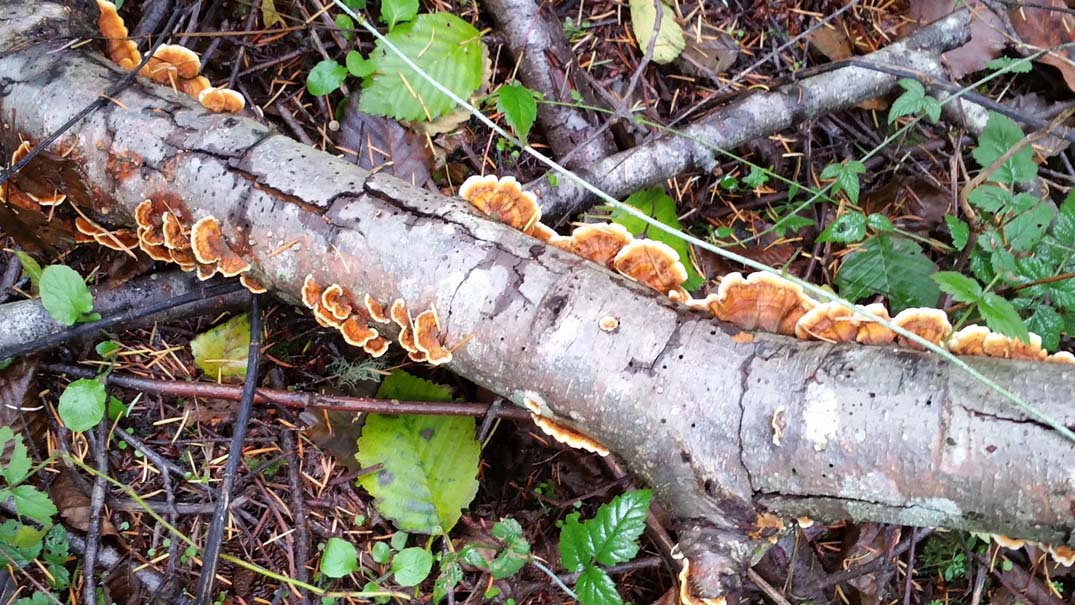
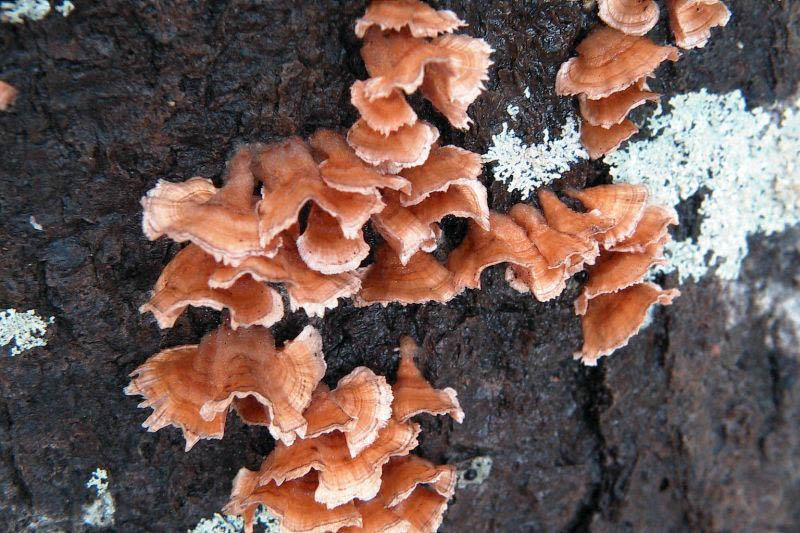
Stereum hirsutum © Julie Jones,
probable Stereum complicatum © James Hilliard
Stereum ochraceoflavum PA+FL -
A hairy capped
species with a very fringed edge, dull
orange colours underneath when fresh (or browner, but never bright
orange like S. hirsutum) and often found on smaller pieces of wood.
We have 1 WA sequence and 2 OR sequences from Sarah DuLong-Duhon's Stereum study that
reportedly match eastern NA sequences.

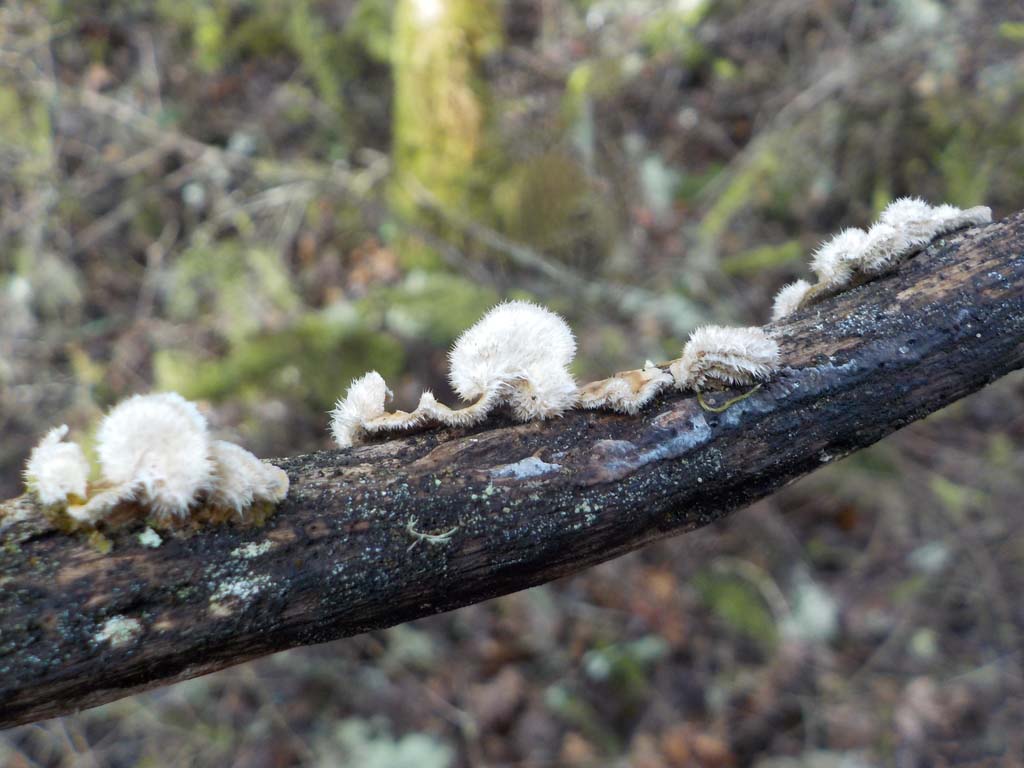

Stereum ochraceoflavum © iNaturalist user mnharris (2 images) and Michael
Beug
Staining red when scratched ("red bleeders")
Stereum cf gausapatum EU -
Usually capped but sometimes resupinate, only on oak, fairly bright orange, bleeding red when scratched.
Stereum hirsutum can be on oak, but won't always be, and is also
bright orange, but doesn't stain red. Our
Vancouver Island and WA sequences matches sequences from eastern North
America (with a handful of alleles or dirty sections being the only
differences), but we don't have European sequences yet of this EU mushroom to
see if our species is the real thing or a sister species.
Stereum cf rugosum EU - Pale
ochre to pinkish-brownish instead of bright orange. Also a
resupinate
red bleeder on various hardwoods, rumoured to occur here. We need
local collections to compare to European sequences to verify these reports,
because the latest thinking is that this doesn't occur anywhere in North
America, nevermind here.
Stereum sanguinolentum EU
- A similar looking resupinate red bleeder,
but dull tan-orange coloured on conifers. PNW and Eastern North American sequences
match European sequences, so it is the same species worldwide.
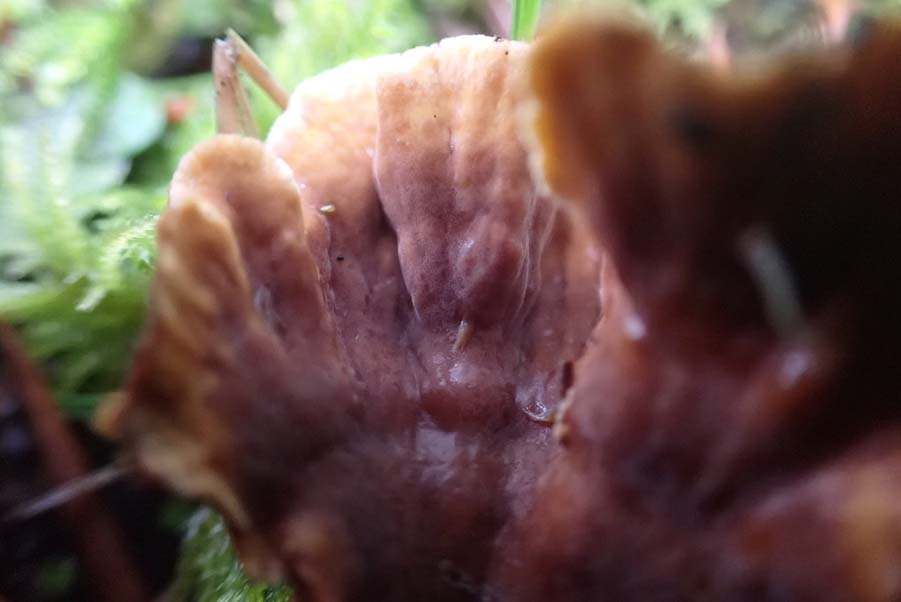
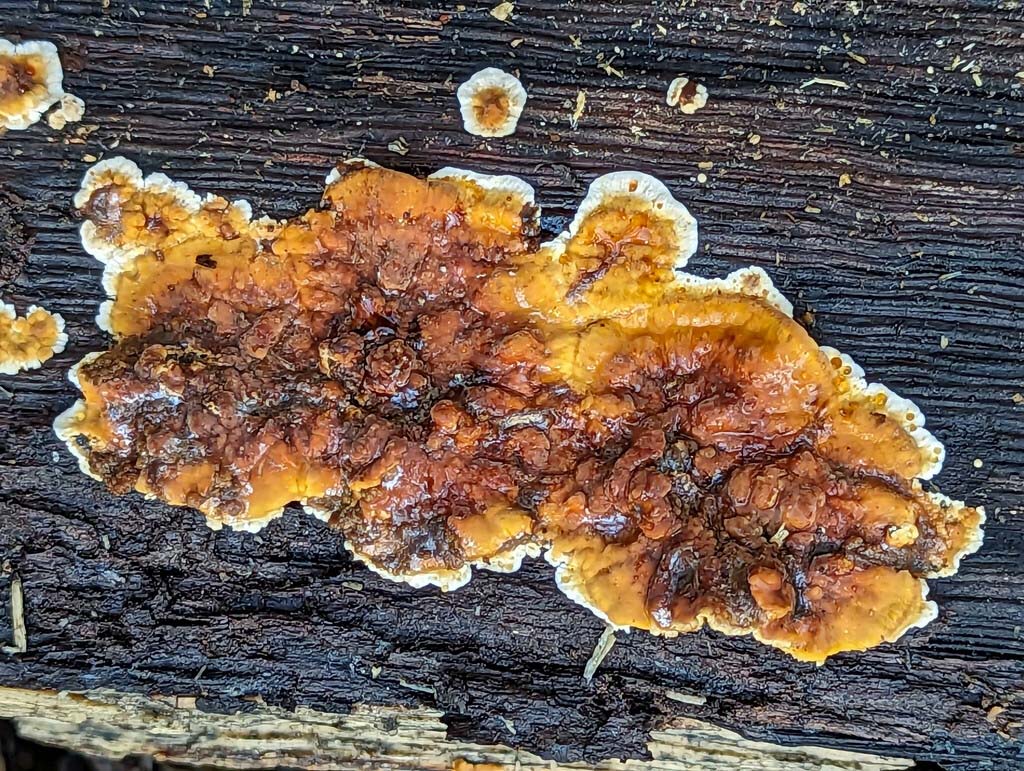
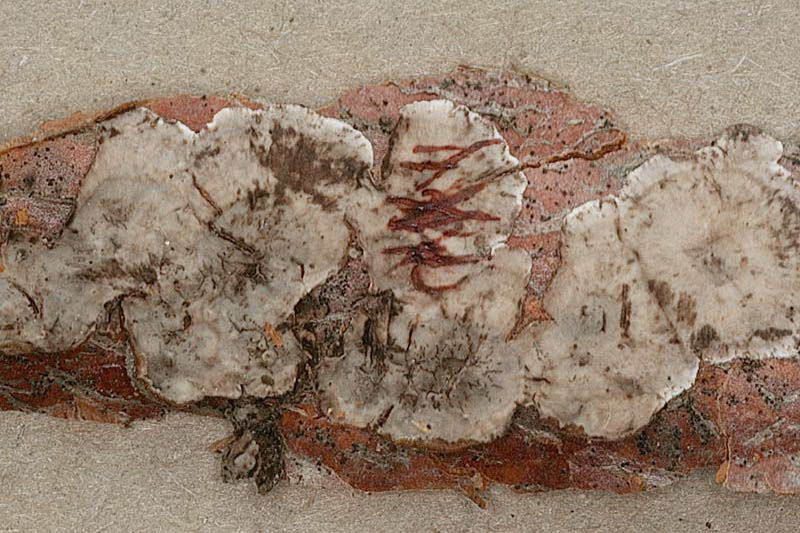
Stereum cf gausapatum (capped) © A and O Ceska, (resupinate) © Michael
Beug, unsequenced S. rugosum © A and O Ceska
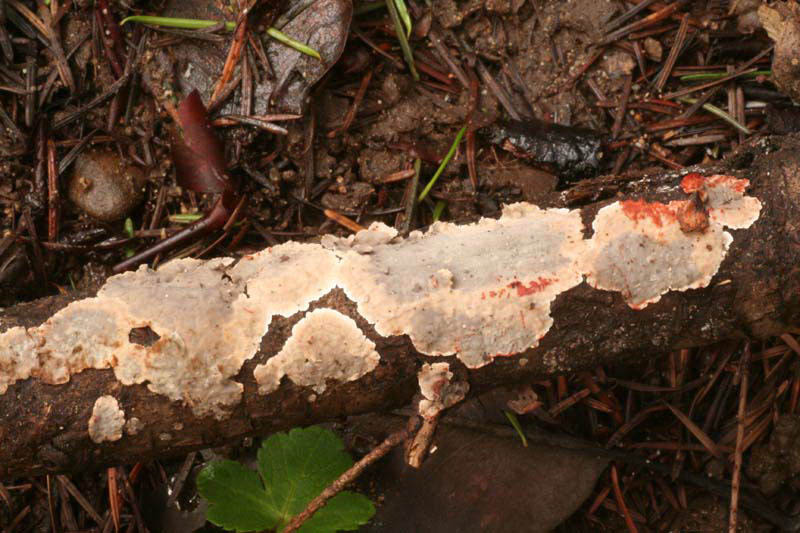
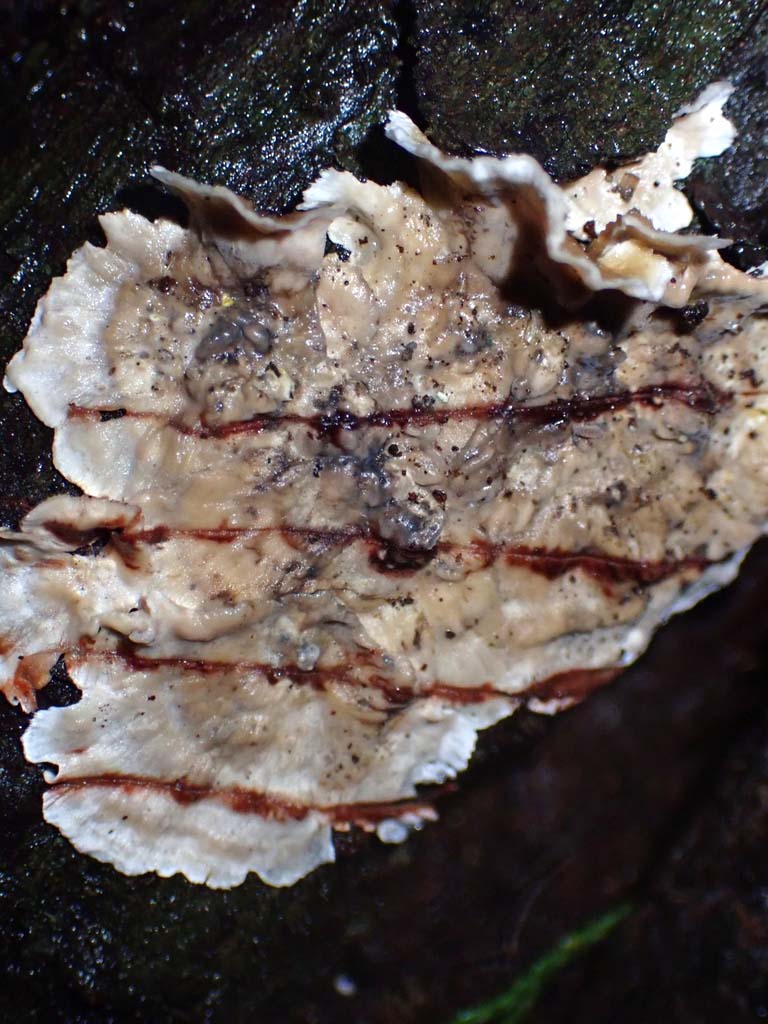
unsequenced S. sanguinolentum © A and O Ceska,
sequenced S. sanguinolentum © Luka Hickey
Stereum atrorubrum BC (=S. subtomentosum EU?) -
S. subtomentosum is mostly a cap, attached to the wood at a single point only, dull orange
underneath, staining yellow-orange when scratched.
On hardwoods. Local sequences are 3 bp and 2 indels different from EU
sequences. However, the little known local species S. atrorubrum is
thought to be an older synonym by Ryvarden and although nobody is disputing that
(including me, since they are described from different parts of the world but
the genetics match in both geographical areas), nobody is using the older name
anyway. We need a type sequence and/or other local collections that specifically
match S. atrorubrum to help prove this. For now, everybody is still using
the newer name.
Stereum
ostrea EU - identical, but bleeding red or yellow turning red. So far,
sequences of this rarely
reported species have all turned out to be other species, according to a
recent study, so we need sequences of supposed collections to test the
theory that all of ours are really just Stereum subtomentosum that
happens to stain more towards the orange-red end of the spectrum instead of
yellow.
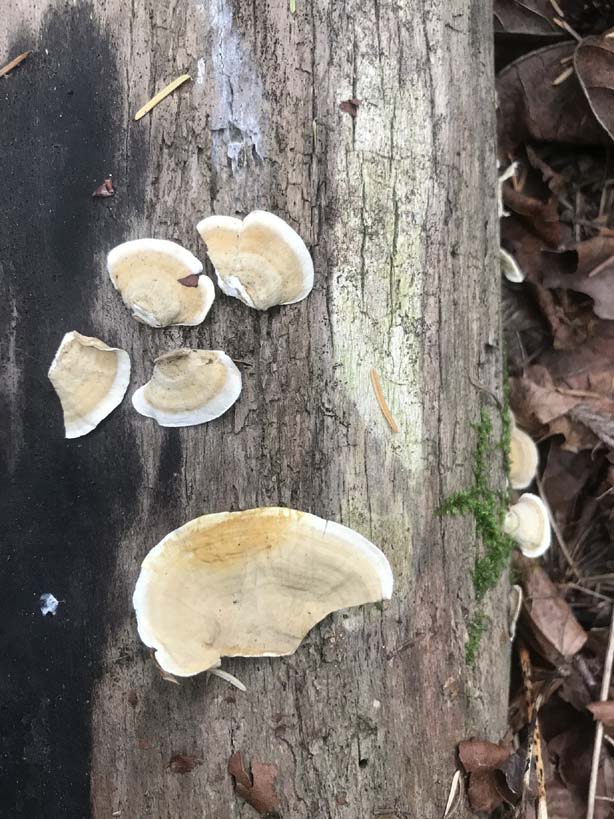
Stereum subtomentosum © Danny Miller

 Stereum - click to expand
Stereum - click to expand